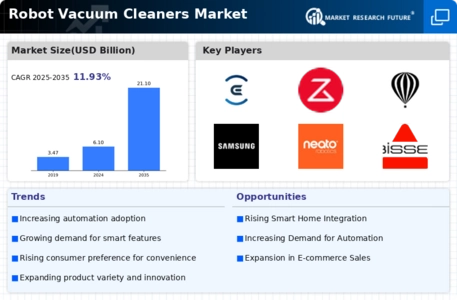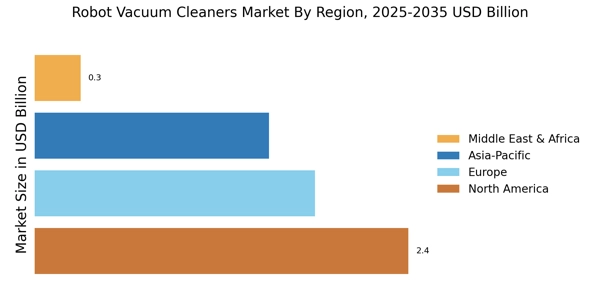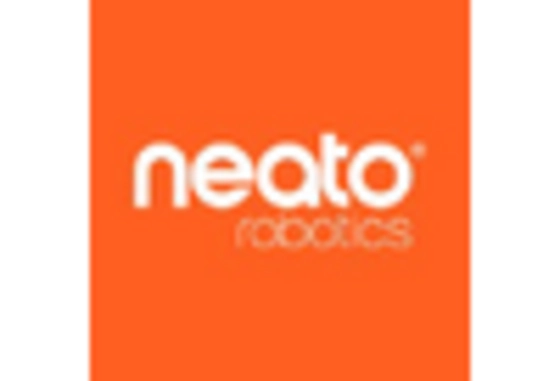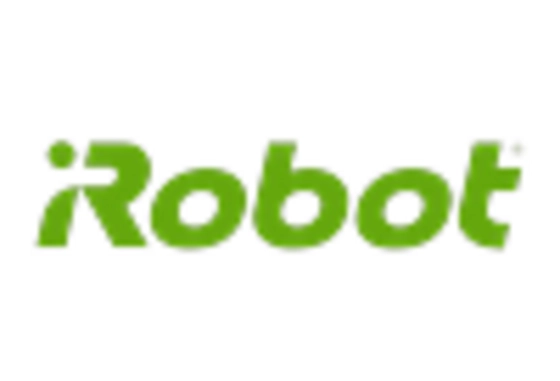Technological Advancements
Technological advancements play a pivotal role in shaping the Robot Vacuum Cleaners Market. Innovations in artificial intelligence, machine learning, and sensor technology have significantly improved the performance and functionality of robotic vacuums. For instance, the introduction of smart navigation systems allows these devices to efficiently map and clean various floor plans. Additionally, the integration of mobile applications enables users to control their vacuum cleaners remotely, enhancing user experience. Market data indicates that models equipped with advanced features are gaining traction among consumers, leading to increased sales. As manufacturers continue to invest in research and development, the Robot Vacuum Cleaners Market is expected to witness further enhancements, making these devices more appealing to a broader audience.
Rising Demand for Automation
The Robot Vacuum Cleaners Market is experiencing a notable surge in demand for automation in household cleaning tasks. As consumers increasingly seek convenience and efficiency, the adoption of robotic vacuum cleaners is on the rise. According to recent data, the market is projected to grow at a compound annual growth rate of approximately 20% over the next five years. This trend is driven by busy lifestyles, where individuals prefer automated solutions to save time and effort. Furthermore, advancements in technology have led to the development of more sophisticated models that offer enhanced features such as mapping and scheduling. This growing inclination towards automation is likely to propel the Robot Vacuum Cleaners Market to new heights, as more households recognize the benefits of integrating these devices into their daily routines.
Increase in Disposable Income
An increase in disposable income is significantly influencing the Robot Vacuum Cleaners Market. As consumers experience higher levels of disposable income, they are more willing to invest in home automation products, including robotic vacuum cleaners. This trend is particularly evident in emerging markets, where rising middle-class populations are seeking modern conveniences to enhance their lifestyles. Market data indicates that households with higher income levels are more likely to adopt robotic cleaning solutions, viewing them as a worthwhile investment in time-saving technology. This shift in consumer spending habits is expected to drive the growth of the Robot Vacuum Cleaners Market, as more individuals prioritize convenience and efficiency in their cleaning routines.
Expansion of E-commerce Platforms
The expansion of e-commerce platforms is transforming the Robot Vacuum Cleaners Market by providing consumers with greater access to a variety of products. Online shopping has become increasingly popular, allowing consumers to compare prices, read reviews, and make informed purchasing decisions from the comfort of their homes. This trend is particularly beneficial for robotic vacuum manufacturers, as it enables them to reach a wider audience without the constraints of traditional retail. Market analysis shows that e-commerce sales of robotic vacuums have surged, contributing to overall market growth. As more consumers turn to online platforms for their shopping needs, the Robot Vacuum Cleaners Market is likely to benefit from this shift, leading to increased sales and brand visibility.
Growing Awareness of Health and Hygiene
The growing awareness of health and hygiene is a crucial driver for the Robot Vacuum Cleaners Market. Consumers are becoming increasingly conscious of the importance of maintaining clean living environments, particularly in light of rising concerns about allergens and dust. Robotic vacuum cleaners offer an effective solution for regular cleaning, helping to reduce the presence of harmful particles in homes. Industry expert's suggests that households with pets or children are particularly inclined to invest in these devices, as they provide a consistent cleaning solution. This heightened focus on cleanliness is likely to sustain the demand for robotic vacuums, as consumers prioritize health and hygiene in their purchasing decisions. Consequently, the Robot Vacuum Cleaners Market is poised for growth as more individuals recognize the benefits of automated cleaning solutions.


















Leave a Comment